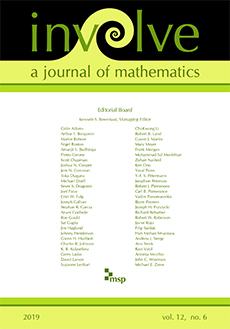Abstract
Motivated by the music-theoretical work of Richard Cohn and David Clampitt on late-nineteenth century harmony, we mathematically prove that the -group of a hexatonic cycle is dual (in the sense of Lewin) to its /-stabilizer. Our points of departure are Cohn’s notions of maximal smoothness and hexatonic cycle, and the symmetry group of the 12-gon; we do not make use of the duality between the /-group and -group. We also discuss how some ideas in the present paper could be used in the proof of /- duality by Crans, Fiore, and Satyendra (Amer. Math. Monthly 116:6 (2009), 479–495).
Citation
Cameron Berry. Thomas M. Fiore. "Hexatonic systems and dual groups in mathematical music theory." Involve 11 (2) 253 - 270, 2018. https://doi.org/10.2140/involve.2018.11.253
Information





